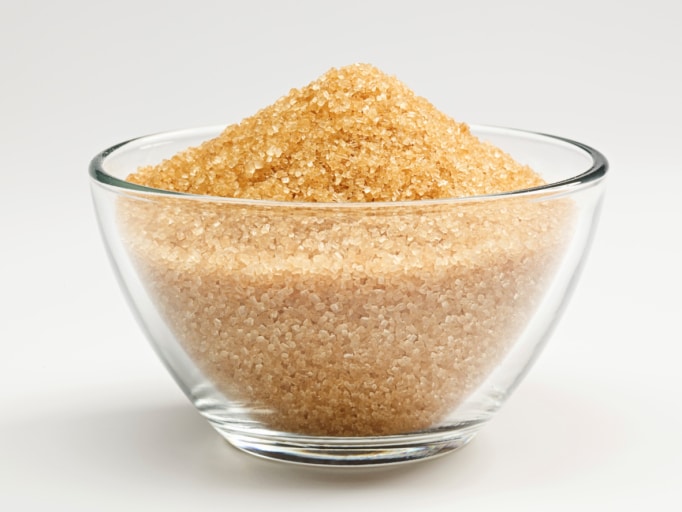Understanding the Critical Methods and Technologies Used in Modern Walking Cane Sugar Processing
The development of walking cane sugar processing has actually been considerably shaped by the assimilation of advanced techniques and technologies that resolve both efficiency and sustainability. As we explore these critical advancements, it comes to be essential to take a look at just how they not only enhance manufacturing however additionally line up with wider market patterns and customer needs, increasing questions about the future of sugar handling and its effects for worldwide markets.
Historic Context of Walking Cane Sugar Processing
The historic context of cane sugar processing discloses a rich tapestry of farming technology and cultural exchange that has actually shaped its development over centuries. The procedure of extracting and improving sugar obtained momentum in India, where techniques for condensation were improved around the 6th century.

Advanced Removal Methods
Effectiveness in walking cane sugar extraction has seen considerable innovations, driven by the demand for higher yields and reduced manufacturing prices. This method not only enhances sugar return yet additionally minimizes the power required for processing.
Additionally, the adoption of membrane filtering modern technologies, such as nanofiltration and turn around osmosis, has changed the splitting up of sugar from impurities. These techniques permit the careful permeation of sugar molecules while keeping larger impurities, streamlining the removal process and minimizing waste.
Moreover, the integration of continuous removal systems has resulted in improved functional effectiveness. Cane Sugar Processing. These systems keep a consistent flow of cane product, making certain ideal removal problems and reducing downtime related to set handling
Ingenious Refining Technologies
Refining techniques in walking stick sugar processing have gone through a transformative shift, driven by the need for greater purity and boosted product quality. Among one of the most noteworthy developments is the adoption of membrane filtration modern technologies, such as ultrafiltration and nanofiltration. These processes successfully eliminate contaminations and colorants without the requirement for comprehensive chemical therapies, therefore protecting the sugar's natural taste and boosting its allure.
One more considerable innovation is making use of ion exchange materials, which permit selective removal of undesirable ions from sugar remedies. This technology not only raises the general pureness of the final product but additionally adds to decreased waste and environmental influence.
Additionally, developments in adsorption techniques, making use of triggered carbon and other sophisticated products, have shown effective in decolorizing sugar services while maintaining optimal quality. The integration of these ingenious refining innovations makes certain that makers can produce refined sugar with exceptional clearness and preference, fulfilling the evolving choices of consumers.
Automation and Control Systems
Recent developments in refining innovations have led the means for considerable improvements in automation and control systems within cane sugar handling facilities. These systems make use of innovative software and equipment to boost functional effectiveness, minimize human error, and make directory sure regular product high quality.
Modern automation incorporates various components, including sensors, actuators, and programmable reasoning controllers (PLCs), making it possible for real-time surveillance and control of essential processes. For instance, temperature level, circulation, and pressure rates can be specifically managed during removal, information, and crystallization stages, maximizing efficiency and reducing waste.
Furthermore, progressed information analytics and maker knowing algorithms play a crucial function in view publisher site predictive upkeep, allowing drivers to prepare for equipment failings prior to they occur. This positive strategy not just lowers downtime but likewise prolongs the life-span of machinery.
In enhancement, automation assists in the implementation of Market 4.0 concepts, empowering sugar mills to attain greater connectivity and data exchange throughout procedures. Because of this, decision-making comes to be more active and informed, eventually improving the total competition of walking stick sugar manufacturing. With these advancements, the industry is well-positioned to fulfill expanding worldwide demands while keeping operational excellence.
Sustainability Practices in Sugar Manufacturing
Sustainability practices in sugar production have come to be increasingly important as the sector looks for to balance economic practicality with environmental responsibility. As customer recognition grows relating to the ecological impacts of agricultural techniques, sugar manufacturers are embracing cutting-edge techniques to minimize their environmental impact.
One substantial approach is the application of accuracy agriculture strategies, which make use of information analytics to enhance resource use, such as water and fertilizers. This minimizes waste and reduces the influence on local communities. Moreover, many manufacturers are transitioning to eco-friendly power resources, such as biomass from sugarcane by-products, to power their operations, consequently lowering reliance on nonrenewable fuel sources.
Water management methods are also crucial; rainwater harvesting and efficient irrigation systems aid mitigate water shortage issues. Cane Sugar Processing. Additionally, incorporated insect administration approaches decrease chemical use, advertising biodiversity and soil health
Business social duty efforts are arising, with business purchasing neighborhood communities and guaranteeing reasonable labor methods. By embracing these sustainability techniques, the sugar market not only improves its credibility yet also contributes to an extra lasting agricultural landscape, leading the way for future generations.

Conclusion
In recap, contemporary walking cane sugar processing includes a variety of innovative methods and modern technologies that considerably improve efficiency, sustainability, and return. The fostering of cutting-edge extraction and refining methods, together with automation and control systems, facilitates enhanced operational efficiency and item high quality. Furthermore, the focus on sustainable methods highlights a dedication to reducing ecological effect and advertising honest production. Collectively, these improvements position the walking cane sugar industry to fulfill contemporary needs while addressing critical worldwide obstacles.
The development of walking cane sugar processing has been substantially shaped by the integration of sophisticated methods and technologies that deal with both performance and sustainability.The historic context of cane sugar processing reveals an abundant tapestry of agricultural innovation and cultural exchange that has shaped its growth over centuries. Innovations in milling and refining arised, laying the groundwork for modern-day cane sugar handling.Refining strategies in cane sugar handling have gone through a transformative shift, driven by the demand for higher purity and improved product high quality.In recap, modern-day walking cane sugar handling from this source integrates a range of advanced strategies and modern technologies that significantly boost performance, return, and sustainability.
 Alfonso Ribeiro Then & Now!
Alfonso Ribeiro Then & Now! Dylan and Cole Sprouse Then & Now!
Dylan and Cole Sprouse Then & Now! Shannon Elizabeth Then & Now!
Shannon Elizabeth Then & Now! Lynda Carter Then & Now!
Lynda Carter Then & Now! Traci Lords Then & Now!
Traci Lords Then & Now!